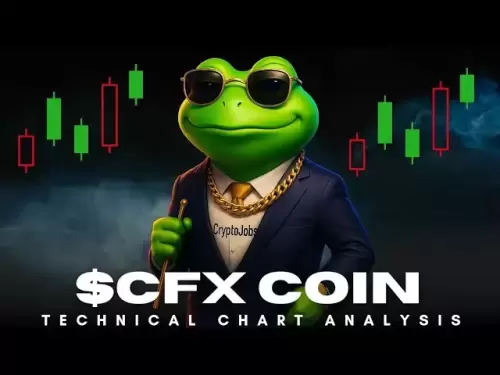 |
|
 |
|
 |
|
 |
|
 |
|
 |
|
 |
|
 |
|
 |
|
 |
|
 |
|
 |
|
 |
|
 |
|
 |
|
Cryptocurrency News Articles
US Treasury Secretary Scott Bessent Recognizes That Stablecoins Could Play an Immense Role in Financing the US Government Budget
May 27, 2025 at 10:15 pm
The Proposed GENIUS Regulation Aims to Open These Floodgates—But Meets a Tepid Reception from the Most Significant Stablecoin So Far.

U.S. Treasury Secretary Scott Bessent has recognized the potential of stablecoins to play an immense role in financing the government budget. His statement follows proposals for GENIUS regulation aiming to open these floodgates—yet the most significant stablecoin so far appears lukewarm to the idea.
In a recent interview with Bloomberg, U.S. Treasury Secretary Scott Bessent discussed the upcoming regulations for stablecoins.
“We want to introduce the highest regulatory and anti-money laundering standards for digital assets, especially for stablecoins. I’ve seen estimates that stablecoins could generate a demand of two trillion dollars for U.S. government bonds and T-bills in no time at all.”
Bessent is essentially repeating what Trump’s “Crypto and AI Czar” David Sacks recently said in an earlier CNBC interview: There already exists an unregulated 200 billion dollar stablecoin market. “If we create legal clarity and a regulatory framework, then I think we can generate a multi-trillion dollar demand for government bonds practically overnight.”
Currently, Tether (USDT) holds around 120 billion dollars in U.S. government bonds, while Circle (USDC) holds another 50-60 billion dollars. This makes stablecoins a significant source of financing for the U.S. government budget already. However, this is still a small part of the trillions in demand that Sacks and Bessent envision.
As Sachs explains, stablecoins “are a new, more efficient, less expensive, and more liquid payment system—a new payment network for the U.S. economy. They also strengthen the dominance of the dollar online.” Technically, nothing prevents ever-increasing portions of dollar supply from circulating as stablecoins.
Given a money supply of $18.43 trillion (M1) or $21.3 trillion (M2), even tokenizing 10-20 percent would create a demand for government bonds amounting to several trillion dollars. In light of the relatively weak demand at the last auction and the presumed disappearance of Japan as a buyer, this development would be more than welcome in the White House.
The GENIUS Act is intended to regulate the stablecoin market and ensure its success. It imposes a variety of obligations on stablecoin issuers. For example, they must publish regular audits, comply with certain reserve requirements, and implement financial sanctions and anti-money laundering measures. GENIUS is similar to the EU rules under MiCA, but grants issuers a bit more freedom, especially regarding the composition of their reserves.
Above all, however, the U.S. government is acting from a position of strength: Stablecoins are pegged nearly 100 percent to the dollar, while euro variants are niche products that nobody uses. While issuers do not need the EU, they are dependent on the United States. This enables the U.S. government to impose its wishes on the market.
The law has good prospects of being enacted. Recently, it passed an important hurdle in the Senate, thanks in part to the support of 15 Democratic representatives.
At Tether, the issuer of the largest stablecoin USDT, these requirements seem to be met with limited enthusiasm. In a recent Bloomberg interview, CEO Paolo Ardoino explained that, while Tether would be closely following the developments of GENIUS, the company’s main markets for USDT were in developing and emerging markets. There, they provide the “unbanked” with access to the U.S. dollar and payment systems.
Accordingly, Tether plans to focus on these markets. However, in order to maintain access to the U.S. market, the company is planning to launch a U.S.-issued stablecoin that complies with GENIUS regulation. Ardoino says they are more comfortable with GENIUS than with MiCA, as GENIUS permits the holding of government bonds, while MiCA mandates that a large portion of reserves must be kept in non-deposit-guaranteed bank accounts. Europe is lagging behind while the U.S. is forging ahead with regulation.
Ardoino does not explain exactly why Tether wants to issue a stablecoin specifically for the U.S. market instead of simply adjusting USDT to meet the requirements. He merely mentions that stablecoins serve different purposes in emerging markets than in the U.S. Presumably, Tether does not want to become too dependent on the United States, but rather maintain its standing as a global stablecoin that cooperates with the U.S. government without being fully absorbed by it.
Disclaimer:info@kdj.com
The information provided is not trading advice. kdj.com does not assume any responsibility for any investments made based on the information provided in this article. Cryptocurrencies are highly volatile and it is highly recommended that you invest with caution after thorough research!
If you believe that the content used on this website infringes your copyright, please contact us immediately (info@kdj.com) and we will delete it promptly.
-

-

-

-

-

-

- XRP Price Forecast: Can XRP Hit $8, $12.60, or Even $100? Surge Drivers Analyzed
- Aug 12, 2025 at 08:00 pm
- XRP's price potential is heating up! This blog breaks down the latest XRP price forecasts, potential surge drivers, and what it would take for XRP to reach ambitious targets like $8, $12.60, or even $100.
-

-

-






























































